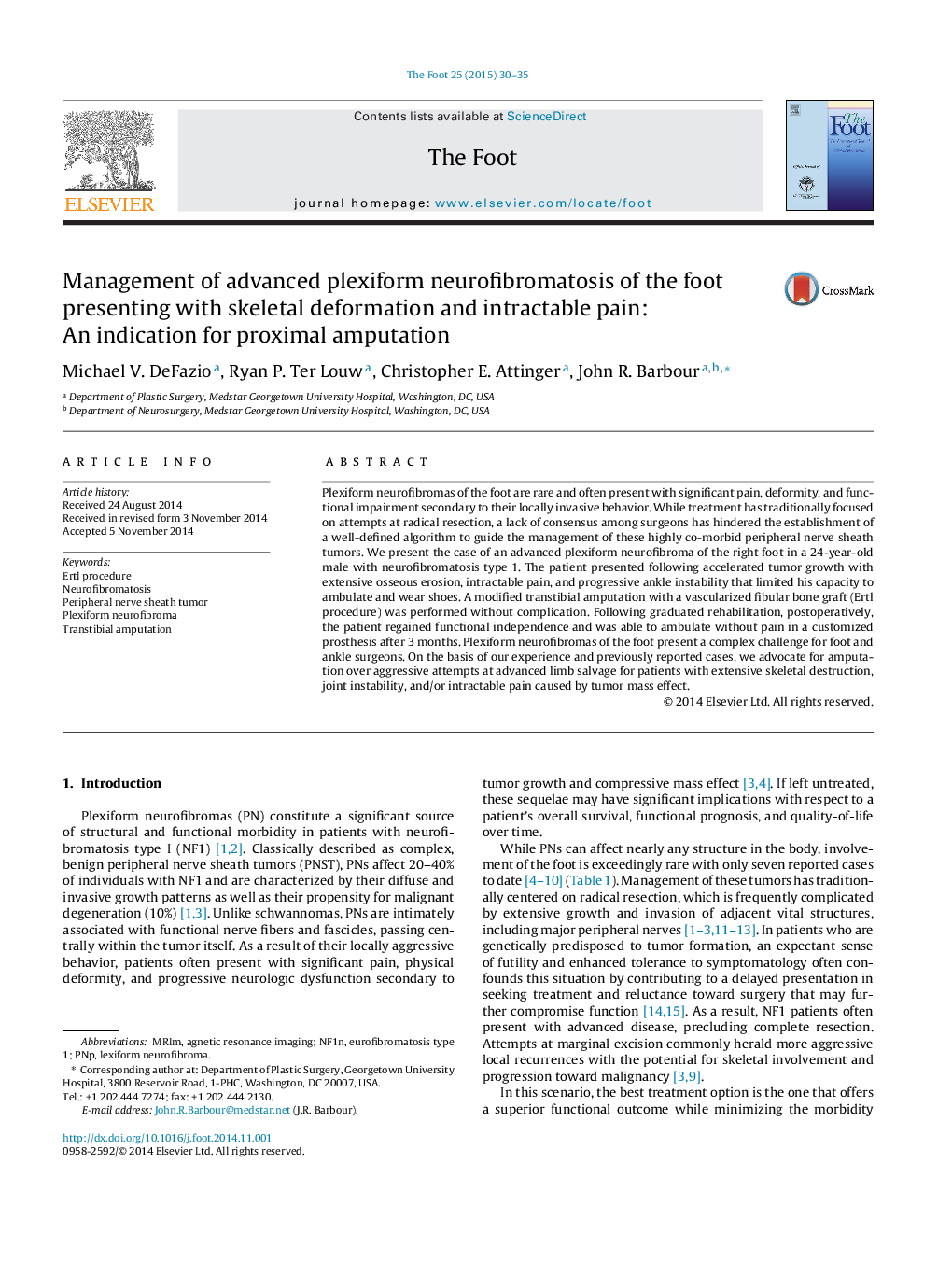| Article ID | Journal | Published Year | Pages | File Type |
|---|---|---|---|---|
| 2717884 | The Foot | 2015 | 6 Pages |
•Plexiform neurofibromas involving the pedal skeleton are extremely rare.•We report a rare plexiform neurofibroma of the foot with skeletal deformation.•Management options including indications for amputation versus salvage are reviewed.•Amputation can promote rapid functional recovery in setting of pain and instability.
Plexiform neurofibromas of the foot are rare and often present with significant pain, deformity, and functional impairment secondary to their locally invasive behavior. While treatment has traditionally focused on attempts at radical resection, a lack of consensus among surgeons has hindered the establishment of a well-defined algorithm to guide the management of these highly co-morbid peripheral nerve sheath tumors. We present the case of an advanced plexiform neurofibroma of the right foot in a 24-year-old male with neurofibromatosis type 1. The patient presented following accelerated tumor growth with extensive osseous erosion, intractable pain, and progressive ankle instability that limited his capacity to ambulate and wear shoes. A modified transtibial amputation with a vascularized fibular bone graft (Ertl procedure) was performed without complication. Following graduated rehabilitation, postoperatively, the patient regained functional independence and was able to ambulate without pain in a customized prosthesis after 3 months. Plexiform neurofibromas of the foot present a complex challenge for foot and ankle surgeons. On the basis of our experience and previously reported cases, we advocate for amputation over aggressive attempts at advanced limb salvage for patients with extensive skeletal destruction, joint instability, and/or intractable pain caused by tumor mass effect.
